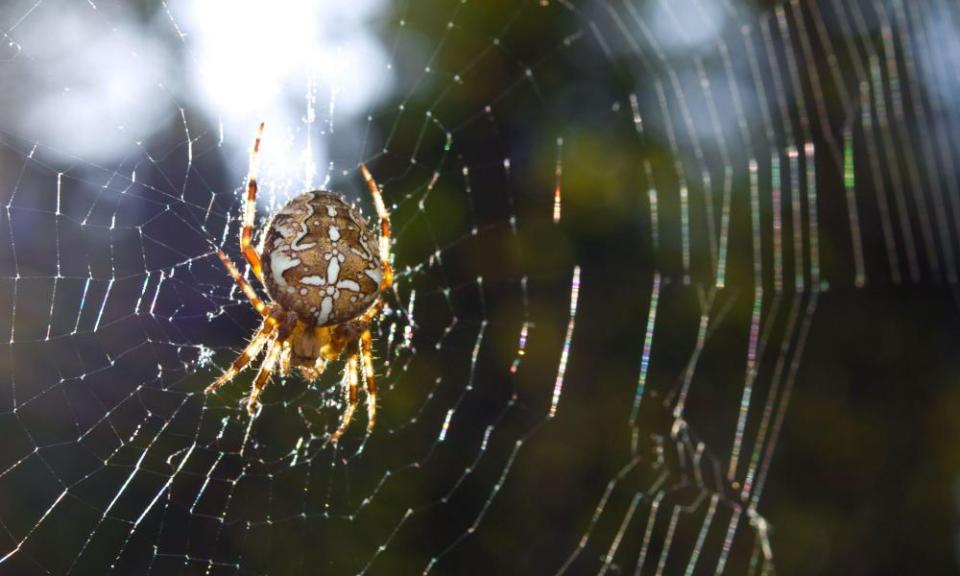Country diary: in a spin over the orb-weaver spiders

Mist was cloaking Ramsley Moor, but the light was anything but flat. The grey veil seemed to glow, catching silvery beads of moisture soaking the heather. Dropping down a steep incline, we stopped for coffee by a stream that had, just like us, gathered pace down the hill, bubbling happily, just as we were, leaning against a wooden fence admiring compact oaks and hawthorns that this year seemed thicker with fruit than ever.
Gradually, I became aware that it wasn’t just the water that was rushing along. In the tangle of fading thistles and nettles behind the fence was a frenzy of construction, a dozen or so orb-weaver spiders with their hard hats on, working busily in the early autumn chill on glittering spirals of silk to strengthen webs freighted with heavy droplets of condensation.
Teasing out orb-weaver species isn’t always straightforward. One of the webs was occupied by a species of zygiella, sometimes called missing sector orb weavers. They leave a couple of slices of their web free of silk except for a signal strand that alerts them to prey caught in the rest of the structure while they lurk safely in their silken nest.
More obvious was a magnificent garden spider, known also as the cross spider, for the white cross on its back, or the crowned orb-weaver, hence diadematus in its Latin moniker. Judging by its size, this one was a female, which outmuscles the male of the species, and sometimes eats him too, after mating in the summer.
With her humbug legs, black and pale yellow in the light, she seemed a vibrant presence – drops of water clinging to her hairs and a strand of silk emerging from her abdomen, turning liquid proteins into a hardening thread spun by her spinnerets: material that is stronger, weight for weight, than steel. Soon she will wrap her hundred or so eggs in a round silken purse to wait for spring and her labours, and life, will be done.
• Country Diary is on Twitter at @gdncountrydiary

 Yahoo Finance
Yahoo Finance 